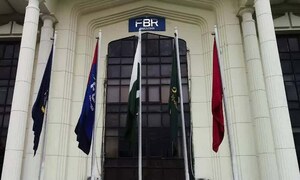You are either mercenary or you are a philanthropist; you are either a missionary or you are a capitalist; you are a corporate raider or a social worker; you are an empire builder or a cause promoter. This either and or mindset has prevailed from time memorial. Activities and plans are compartmentalized, segmented, labelled and people are slotted into them. If you are big business then you are big in your ambition to accumulate wealth and have big designs of drawing every cent of money available. If you are a social worker you are condescending of big business and are too driven by your cause to think about how to expand and grow. These perceptual divisions exist in most minds and in fact have been responsible for creating a win-lose for both ends. The business builders are seen as heartless and the mission builders as cashless.
In the modern era of synergies, a rethink has taken place that is slowly but surely pervading the boundaries of what businesses should act and be and also how non-profit need to focus and redo. The globalization and more so the digitalization of the world has made the world more informed, more interactive and more interfering. Gone are the days when major errors by companies were local events that were forgotten in history. Every single move or act in any part of the world becomes mega news in seconds. In this exposed world there is no place to hide. Thus organizations have to be very conscious of a very conscious world out there- A world where the millennials are very sensitive about how the businesses make money; where media in seconds will blow out the sails of any company that is not transparent; where more chats and discussions take place across the globe than any formal meeting in board rooms.
Keeping this in view the businesses have rightly decided to mend their ways of working. They are working on their image building as good corporate citizens. The concept of Corporate Social Responsibility (CSR) is now part of most organizations. This essentially means that they will yearly do some charity or developmental work on the social development side. Budgets are allocated and activities are conducted to present the softer side of the organization. This usually is handled by a small side department of Corporate Communication or Public Affairs and would be an extension of the main business. However, that may not be enough in this clamouring world of social injustice and inequity.
What organizations are now expected is not just treat social responsibility as a sideline offer to the main menu but a part of the ingredients of its best offers. This scares businesses as they are fine with some token allocation for social causes but as a part of main businesses it appears to be at the cost of their bottom lines. This notion is now being challenged by the intrusive and demanding world of young and restless millennials. They want the world to be more luxurious for themselves but they also want the luxury not to make them feel guilty. To assuage the guilt trips and to appeal to the great desire for not only taking but giving organizations have started thinking afresh on how to make compassion an asset that contributes to the organization's and employees' health.
Thus, organizations have to now make corporate compassion an integral part of what they do. To achieve this centrality the top management has to be sold the concept that compassion enhances compensation. One of the biggest examples of cash and compassion combination was exercised by Blake Mycoskie who founded his one-for-one shoe company with the brand name TOMS Shoes in his Venice, Calif., apartment in 2006. Now, 40 percent of all shoes given away are made in the countries where they are distributed. He started by giving people this great high of not only taking and spending on themselves but also on giving and spending on others. Even he himself was surprised at the response where people simply bought the shoes because they felt good that every time they buy they will be covering somebody's bare foot.
Also research shows that companies that are viewed having a conscious are three times more likely to retain their employees than organizations that are just cut throat number crunchers. Employees feel good about working in a company that is striving to make the lives better of not just their customers who give generous amounts of money to buy their offerings but community who gain by their activities and largesse. On Christmas, the sales are at peak and employees are overworked, fatigued and grumpy. To make them more engaged one of the store managers introduced the concept of Santa Store and asked all employees to bring from their homes stuff they do not use and can give away to needy people. This had a great impact on employee behavior which changed from complaining to contributing.
As employees were involved in this showing and receiving of compassion from one another, the entire morale of the company began to improve. People were happier at work, they were kinder to one another, and then suddenly that ripple effect began spreading beyond the walls of the company. As employees were on the phones talking to customers they were showing an increased level of care and concern for the clients. Their efforts to understand the needs of the customer became more personal to them and they became more dedicated toward doing whatever they could to help that customer feel happy. Personal handwritten notes of thanks began being sent from employees to clients and employees seemed happy to go the extra mile to take care of them.This increased sales, which increased their Christmas bonuses, which led to more contributions to the Santa Store variety."Change your focus, from making money to serving more people. Serving more people makes the money come in." -Robert Kiyosaki
But the intent matters. If the intent is to use compassion to make cash it will not have sustainable growth. The pretense will show and after a while both employees and customers will make out the act. But if the intent is to share the money both with those who have and those who do not, the resultant care and kindness in treating each other within the company and treating outsiders will have an enduring, inspiring and engaging impact. After all we can have a living but not a life. As Winston Churchill said, "We make a living by what we get, but we make a life by what we give."
(The writer can be reached at [email protected])
BR100
11,813
Decreased By
-53.2 (-0.45%)
BR30
35,707
Increased By
9.7 (0.03%)
KSE100
113,378
Decreased By
-770.4 (-0.67%)
KSE30
35,674
Decreased By
-277.8 (-0.77%)

























Comments
Comments are closed.